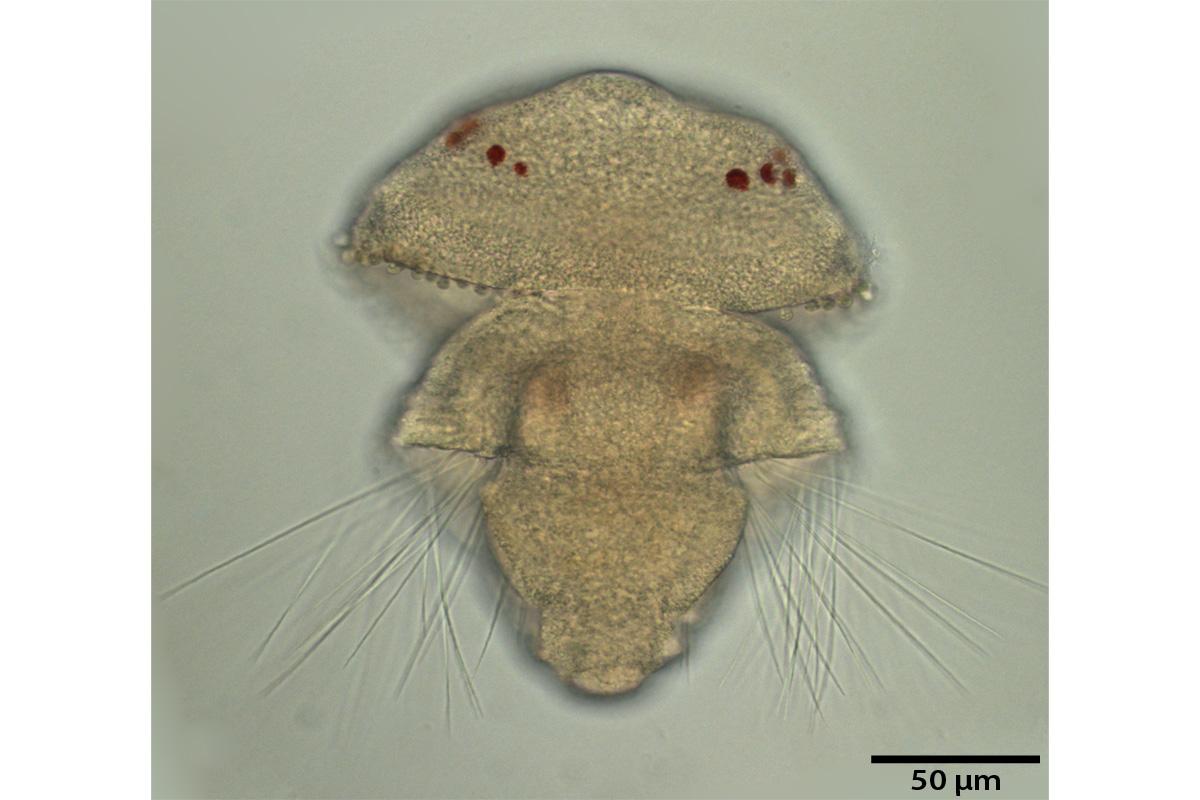A brachiopod's eye-sight - Understanding the evolution of light sensitive organs in the phylum Brachiopoda
As early as in the 19th century, zoologists noticed up to 16 pigment spots on the front part of brachiopod larvae. Since these larvae react to light their pigment spots were assumed to represent photoreceptors. Carsten Lüter of the Museum für Naturkunde Berlin followed up on the theory that was never confirmed.
“My idea for the project was to systematically investigate eye spots in all recent brachiopod species whose larvae have these structures,” says Lüter. Fossil finds prove the existence of around 20,000 extinct species. Today, there are about 400, which occur in all oceans and at all water depths. If their eye spots have the same structure, this suggests a common ancestor whose larvae already had such eyes, according to the simplified project hypothesis. In addition, the researchers wanted to find out how the structure differs from that of related groups such as bivalves.
First into the light, then into the dark
Lüters' team examined the larvae with light and electron microscopes. They also used antibodies that attach themselves to light-sensitive proteins. These antibodies can be used to mark cells in the tissue that are involved in the perception of light.
Lüter was able to show that the pigment spots are eyes and that they have the same structure in all recent brachiopod species, i.e. that they are inherited from a common ancestor: Each eye consists of two light-sensitive cells, each with a cilia, whose surface is greatly enlarged and whose membrane carries the light-sensitive protein structures. By relying on cilia as carriers of the light-sensitive protein, the eyes of the brachiopods differ significantly from those of closely related groups and are more similar to those of vertebrates.
“The eyes are certainly involved in behaviour,” said Lüter explaining their function. In an early larval stage, the animals seek light and actively swim towards it. Probably, they can grow better in warmer water near the surface. However, shortly before they metamorphose into adults, the situation is reversed. “The adults usually sit in darker places, such as caves,” says Lüter. The larvae can use eye patches to recognize the direction of the incoming light and swim away from it before settling down.
In a follow-up project, Lüter and colleagues from the University of Moscow want to investigate whether the pigment spots, which are also found in the adult animals of a brachiopod species, are eyes that they have taken over from the larvae. This would be the first detection of such structures in adult brachiopods.
Partners
- Universität Greifswald
- Sars International Centre for Marine Molecular Biology
- University of Glasgow
- Statione Zoologica Anton Dohrn
- Universität Tokio
- Kewalo Marine Laboratory
- Friday Harbor Laboratories
Funding
German Research Foundation - DFG
